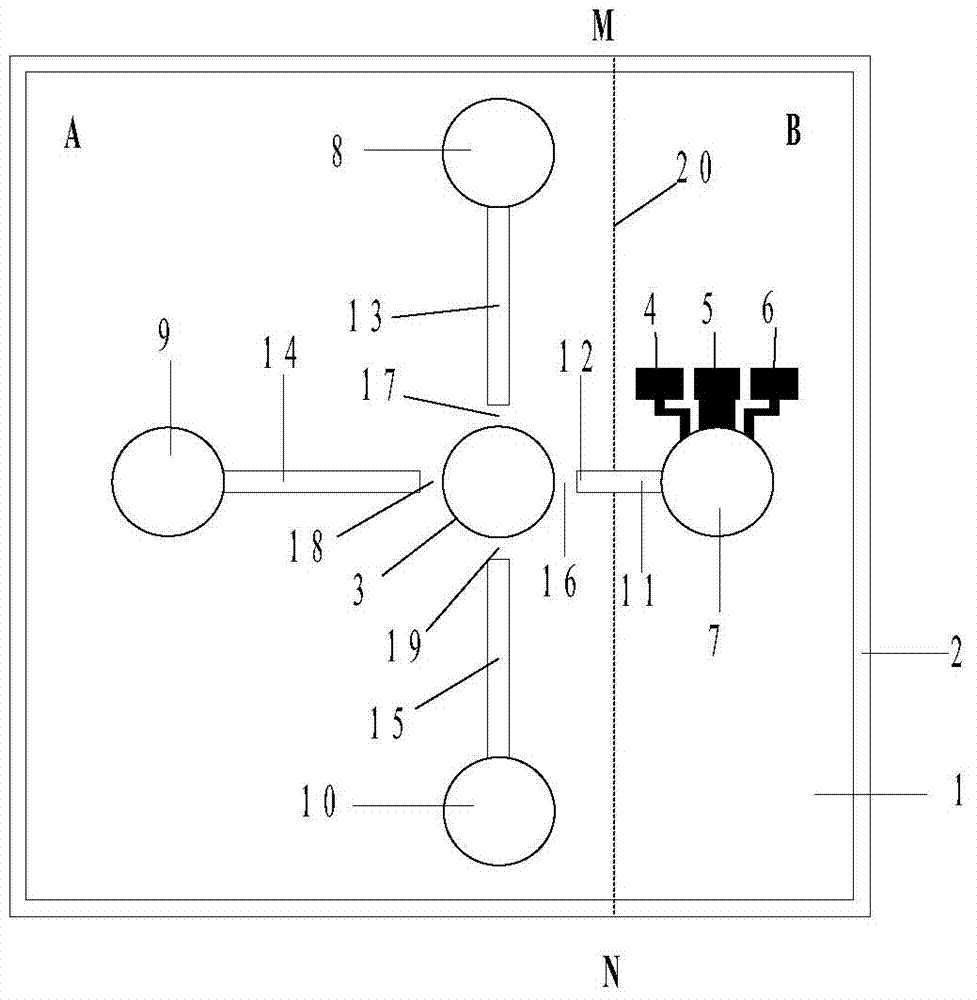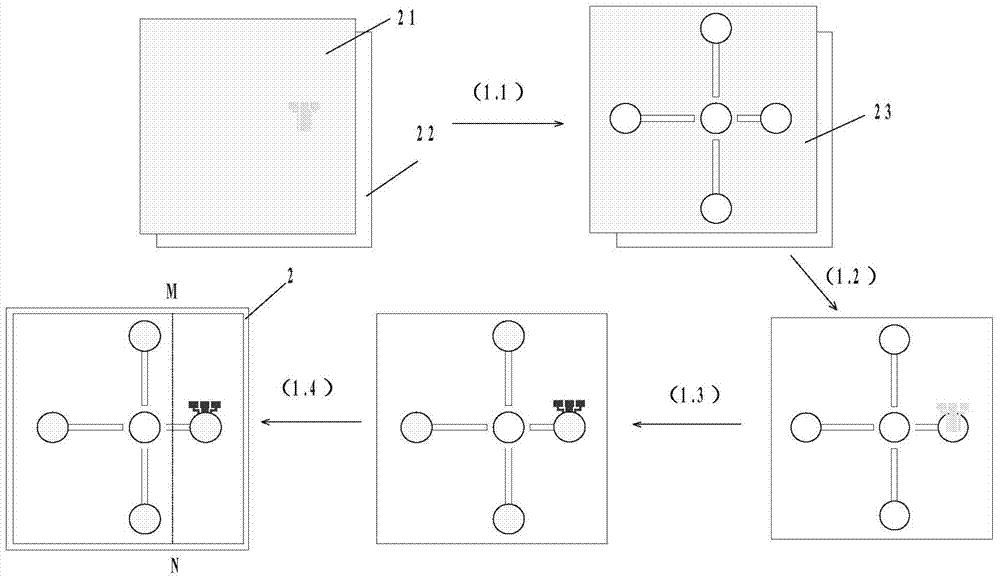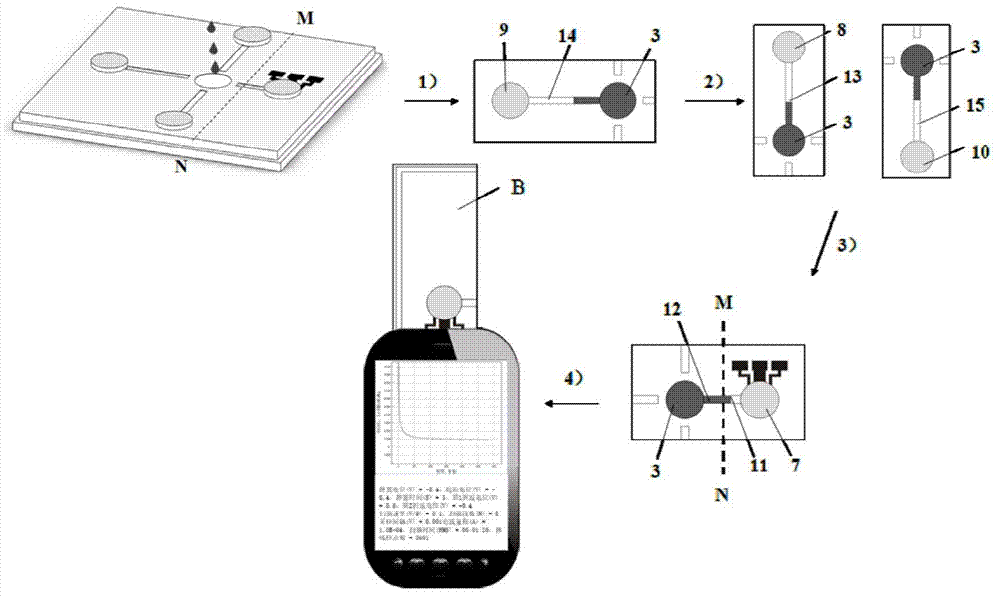Method for detecting water pollutant biotoxicity by paper-based micro-fluidic chip anode current
A technology of microfluidic chip and anode current, applied in the direction of material electrochemical variables, etc., to achieve integration and portability, reduce equipment or production costs, and reduce equipment dependence
- Summary
- Abstract
- Description
- Claims
- Application Information
AI Technical Summary
Problems solved by technology
Method used
Image
Examples
Embodiment Construction
[0029] The present invention will be described in detail below in conjunction with the accompanying drawings and embodiments.
[0030] A paper-based microfluidic chip anode current detection method for the biological toxicity of water pollutants, comprising the following steps,
[0031] Step 1. Make a paper-based microfluidic chip first. For the manufacturing steps, refer to figure 2 , the final chip structure refers tofigure 1 ,
[0032] (1.1), earlier use CorelDRAW 9 drawing software design to comprise the three electrodes of counter electrode 4, working electrode 5 and reference electrode 6, three electrodes are processed into the first screen plate 21 of 200 orders, use on Whatman No. 1 chromatographic paper 22 fronts Carbon paste (Henkel) screen printing, baked in an oven at 150°C for 1 hour; obtain chromatographic paper comprising three electrodes;
[0033] (1.2), then use drawing software design to include five microchannels and sample injection area 3, five microcha...
PUM
 Login to View More
Login to View More Abstract
Description
Claims
Application Information
 Login to View More
Login to View More - R&D
- Intellectual Property
- Life Sciences
- Materials
- Tech Scout
- Unparalleled Data Quality
- Higher Quality Content
- 60% Fewer Hallucinations
Browse by: Latest US Patents, China's latest patents, Technical Efficacy Thesaurus, Application Domain, Technology Topic, Popular Technical Reports.
© 2025 PatSnap. All rights reserved.Legal|Privacy policy|Modern Slavery Act Transparency Statement|Sitemap|About US| Contact US: help@patsnap.com



